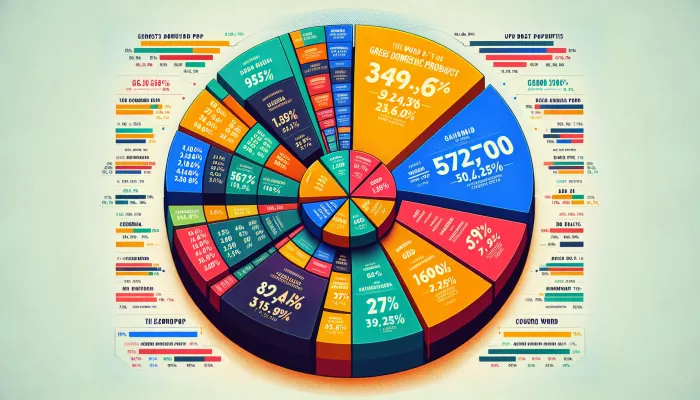Different nations of the world have different natural resources, political structures, populations, and levels of technology.
These factors influence the world's largest economies and GDPs (Gross Domestic Product), which is a measure of the size of a nation's economy.

The first position in the list of the largest GDPs in the world remains between two nations: United States It is China. Together, these two countries produce more than a third of the world's GDP.
O Japan stands out as the third largest economy in the world, with a GDP of approximately 5 trillion dollars.
Closely followed by Germany with a GDP of over 4 trillion and in fifth place, India with a GDP almost equal to that of Germany.
However, these rankings are just a visualization of the size of each country's economy. They do not necessarily reflect the standard of living or well-being of each nation's citizens.
O Gross Domestic Product (GDP) is a key indicator for measuring a nation's economic performance. Defined as the total value of all goods and services produced in a country within a given period.
In the largest global economies, GDP plays an important role for several reasons:
Policymakers use GDP as a tool to decide which policies to implement.
For example, if GDP is declining, they may choose to implement policies to stimulate growth, such as lowering interest rates or increasing government spending.
On the contrary, if GDP is constantly growing, they may try to cool down the economy by raising interest rates or reducing public spending.
When we look at the economy of each country, we find important indicators that give us an insight into the well-being, development and growth potential of that country.
One of these crucial indicators is the Gross Domestic Product (GDP), which represents the total value of all goods and services produced in a year.
In this sense, we will discover which nations have the highest income by examining the countries with the highest GDPs.
This can range from developed countries with a significant population to smaller nations with substantial natural resource wealth.
Historically, the United States have maintained the title of the country with the highest overall GDP.
This is attributed to a large population and a diversified economy that includes sectors such as technology, manufacturing, healthcare and education.
However, the China has shown a significant growth rate, having already surpassed the United States in terms of GDP based on purchasing power parity.
But a nation's wealth is not dictated solely by its size. Smaller countries, such as Qatar It is Luxembourg, have some of the highest GDPs per capita in the world, thanks to their thriving oil and finance industries, respectively.
For example, The World Bank's World Development Indicators is a data source that can be used to explore more about countries' GDP.
Therefore, understanding the world's largest economies and GDPs is a big step towards figuring out which nations have the highest income.
It is important to remember that GDP is just one indicator and should not be used in isolation to measure a nation's prosperity.